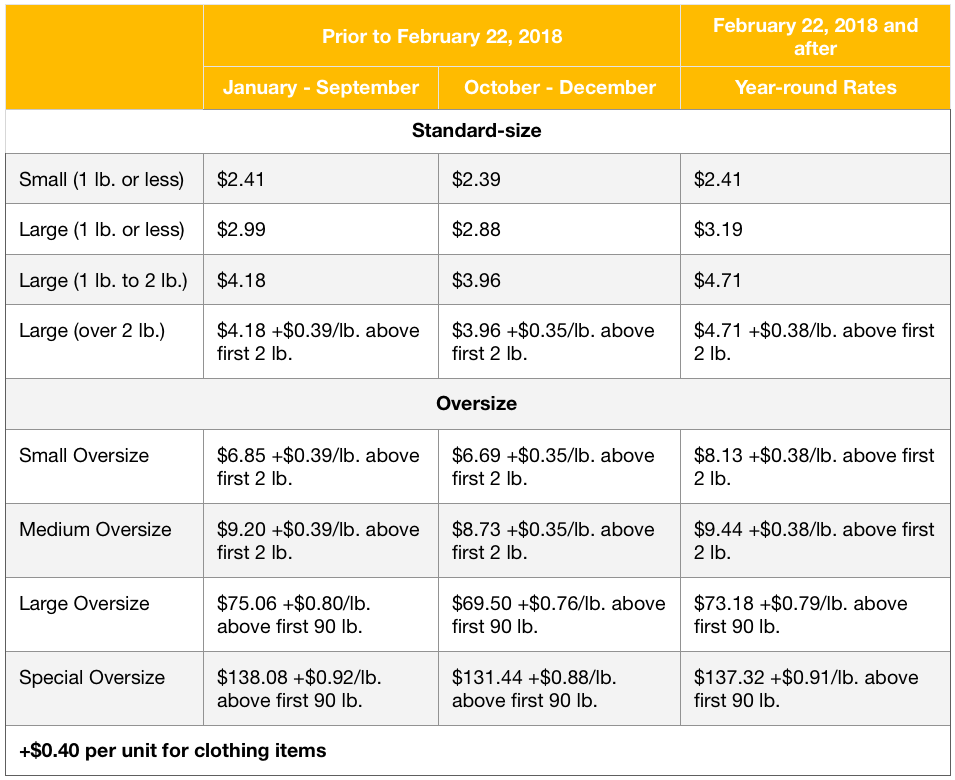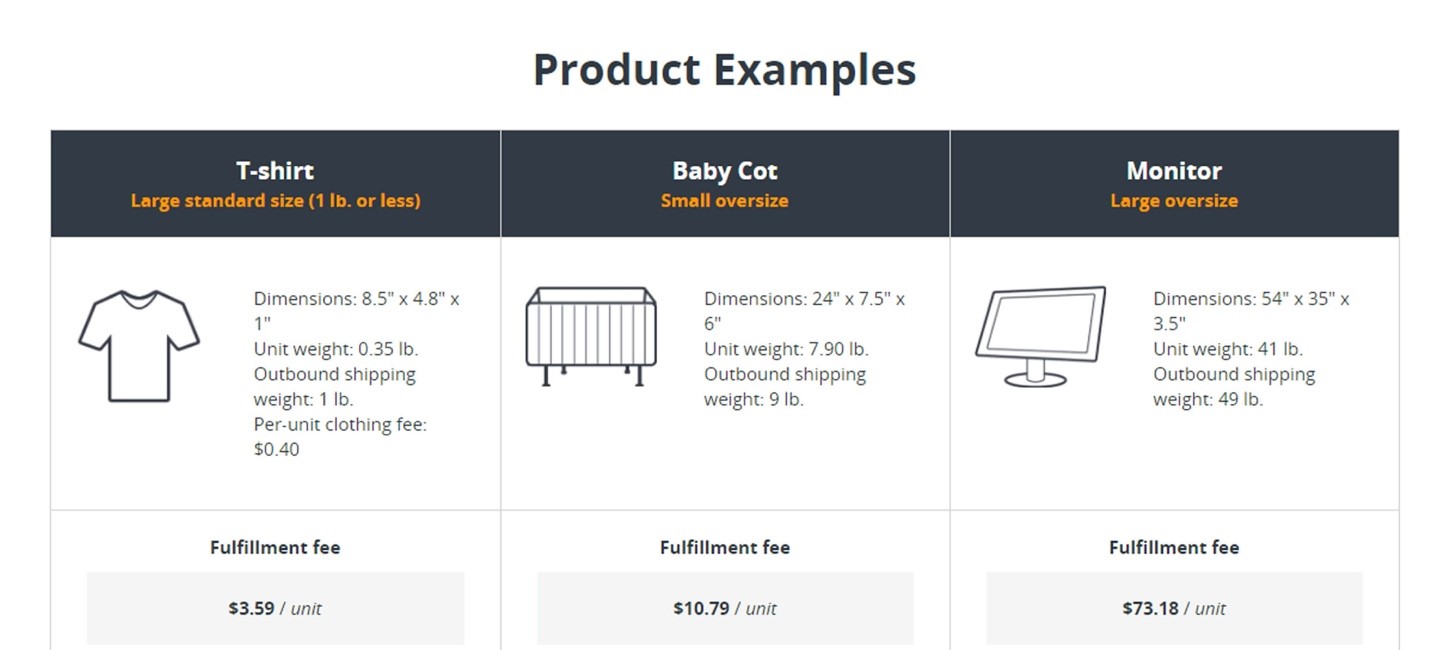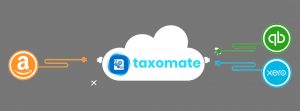A Guide to Understanding Amazon FBA Seller Fees
In 2018, Amazon made a streamline of the Fulfillment by Amazon (FBA) fees which include features that are quite easy to understand and manage by sellers.
The characteristics of this FBA fee include the fees for picking, packing, and shipping. All these fees are combined to make the fulfillment fee which is then recorded in books in the inventory, paying the inventory storage fees. The features of this new FBA come with the ability to forecast costs with the aid of a Fulfillment by Amazon calculator.

With the use of the Fulfillment by Sellers’ scheme, every two weeks, Amazon makes payment to sellers. The services include providing a quick payout of earnings from Amazon and depositing into an account.
FBA fees with respect to the sold products are on the basis of the product’s size, as well as the location of sales. These fees are competitive and are extremely low for products sold on Amazon. This is the most important feature in which most businesses consider for choosing FBA as a fulfillment option on Amazon.
There are two primary FBA fees to be paid when using FBA to stock inventory, pick and ship sold products. They include:
1. Fulfillment fees: This fee is considered as a medium fee which is composed of picking, packing, shipping overseas, box packing, and packaging. It is a sequencing fee from picking to shipment to the desired location.
2. Monthly Storage fees: This is the fee paid for the storing products in Amazon’s storage or warehouse. It is composed of the Inventory storage fees which is paid for the space occupied by a product bought on Amazon.
There are two size categories for products in order to assign the fulfillment and storage fees. They include:
1. Oversize products: These are products with sizes over 20 pounds in weight or 18” by 14” by 8” larger and consume a lot of space in storage including packaging. They affect the fees greatly and are about four subsize categories.
2. Standard-size products: These are products with sizes less than 20 pounds in weight or 18” by 14” by 8” lesser and adequately packaged. They do not affect the fees like the oversize category, and there are also four subsize categories too.

With respect to the low fees required on Amazon for a fulfillment option for Amazon sellers, it also covers the customer service provided by Amazon when asked questions on picking, packaging, shipping and other payments involved. Asides the payment options of the fulfillment fee above, it also includes the return processing package for some instances. Sometimes when a package is returned, or a category offers free returns, there is still always a return processing fee to be paid. This return processing fee is equivalent to the fulfillment fee when a customer returns them.
However, Amazon sellers pay a separate fee called the Seller Fee. This fee isn’t added to the FBA fees, and these Amazon seller fees are charged even when FBA is used to store and ship products or not. An estimated percentage of this fee is about 15% of the selling price of such product which is almost certainly a lot to pay on Amazon. Quite a number of Amazon Sellers often ignore this fee and go for the Fulfilment fees to act as an alternative to making the viability of sales on Amazon possible.
According to Russ & Danielle, Founders, Outlaw Soaps:
“Look at the big picture when selling on Amazon and using FBA. Don’t get hung up on the fact that you’re not going to see your normal retail margins on Amazon sales. FBA gets you the Prime listings, and that means more sales for your brand. As long as you still see profits, that’s what matters.”
Amazon FBA Seller Fees: an Illustration on Amazon Fulfillment Fees for Non-Amazon Products
Through the use of Multi-Channel Fulfillment (MCF), FBA can fill orders on a platform other than Amazon like eBay. The fulfillment fees are higher than on Amazon, but the inventory storage fees are the same. There are two different shipping methods that can be selected with MCF; Standard, Expedited 2-Day, and Priority 1-Day.
There are other differences between MCF fees and FBA fees asides the differences in fulfillment fees, they include:
- MCF fees only apply to products that are sold on other platforms and websites other than Amazon
- MCF doesn’t charge an Amazon Seller Fee since products weren’t sold on Amazon.
On this website, Amazon’s Seller Fees makes a set of mixing bowls more profitable than when sold on Amazon itself.
Also, according to Craig Boyd, President of Furniture Clinic:
“Our Amazon Sales are typically single-unit purchases, whereas purchases made directly from our website are typically multi-unit purchases. Looking closer, our average order value on Amazon is less than $25.00, but over $55.00 on our website. With Fulfilment by Amazon, we can let Amazon orders tick through at high volume and with minimal effort, while we concentrate on the higher value orders ourselves. It’s a great benefit to the operations.”
The Amazon Seller Fees has a significant impact on profitability. They consist of the Account fees and referral fees which ranges from $0 to $39.99 per month, and referral fees that range from 6% to 20% with respect to the selling price of a product. In addition, sellers of this product will have to fulfill and ship orders, and there is a wide variation in the cost which solely depends on the product.
FBA & MCF equations and the Cost Factor for Amazon Sellers
Additional fees that may be paid on Amazon either on FBA or MCF include:
1. Labeling fee: This is the fee paid on the basis of Amazon having a label-strict bar code specifications for all the stock that is being shipped to FBA. If this stock or product is not labeled properly, a labeling fee is charged.
2. FBA Prep & FBA Unplanned Prep Service: There are strict prep guidelines protecting packaging of a product. However, to opt out of this prep product and package, a certain fee is paid. Also, if a product is prepped improperly, an unplanned prep fee is also paid.
3. Returns processing: As earlier stated, for many categories, basic returns processing is free but not with categories that have free customer returns. The returns processing fee billed by FBA is simultaneous to the fulfillment fee.
4. Long-term storage: If a stock has been at the fulfillment center for over six months or stock stays unsold, Amazon charges a long-term storage fee.
5. Stock Removal Fee: There is a removal fee charged by Amazon on inventory pulled out from Amazon, or a disposed stock which has remained unsold.
All these fees to be paid should be well taken good note of and ensure they don’t creep into your bill. That is why there is a service like taxomate to keep records in check and monitor all transactions.
Amazon FBA Seller Fees: The merit of FBA as a Fulfillment Option for Amazon Sellers
With the functions and components of the FBA, it is certain that Amazon is in need of marketplace that offers sellers an affordable fulfillment fee and an inventory storage fee.
The following are merits that come with the affordability of a fulfillment fee using the FBA for Amazon Sellers:
1. Prime Free Shipping Eligibility
2. Free Shopping Vouchers & Free Shipping Coupons
3. The Most Ranked Searched Platform
4. An Increase in Buy-Box Placement
5. Amazon has built the trust for years now, which has made them acceptable.
Amazon FBA Seller Fees: Fulfillment by Amazon and taxomate
 Monitoring every transaction and fees paid on Amazon is essential. Whatever transactions have been made are documented in books/inventory; this is done manually because Amazon hasn’t had any feature to automate this yet.
Monitoring every transaction and fees paid on Amazon is essential. Whatever transactions have been made are documented in books/inventory; this is done manually because Amazon hasn’t had any feature to automate this yet.
However, with the aid of taxomate, it is easy to import Amazon transactions to Quickbooks, Xero, or both.
This system allows you to connect your Amazon account easily and make importation of order sales available too. It also allows you to monitor and manage your transactions closely.
taxomate has the following characteristics:
1. They cover over ten country marketplaces with the integration of Quickbooks Amazon and Xero Amazon.
2. They automate accounting for Amazon marketplace sales, Fulfilment by Amazon seller fees, cost of goods sold, make refunds, reimbursements, and FBA inventory.
3. Fulfillment by Amazon and Fulfilment by Merchant are both fully automated for accounting.
4. They generate invoices or journals from sources and posts them to a cloud counting system.
So . . .
FBA isn’t all about Fulfillment and inventory storage; it is about protecting the reputation and leveraging Amazon’s brand.
An e-commerce website like that is always very difficult to manage, and in order to boost exposure and sales, FBA was formed to meet all these demands.